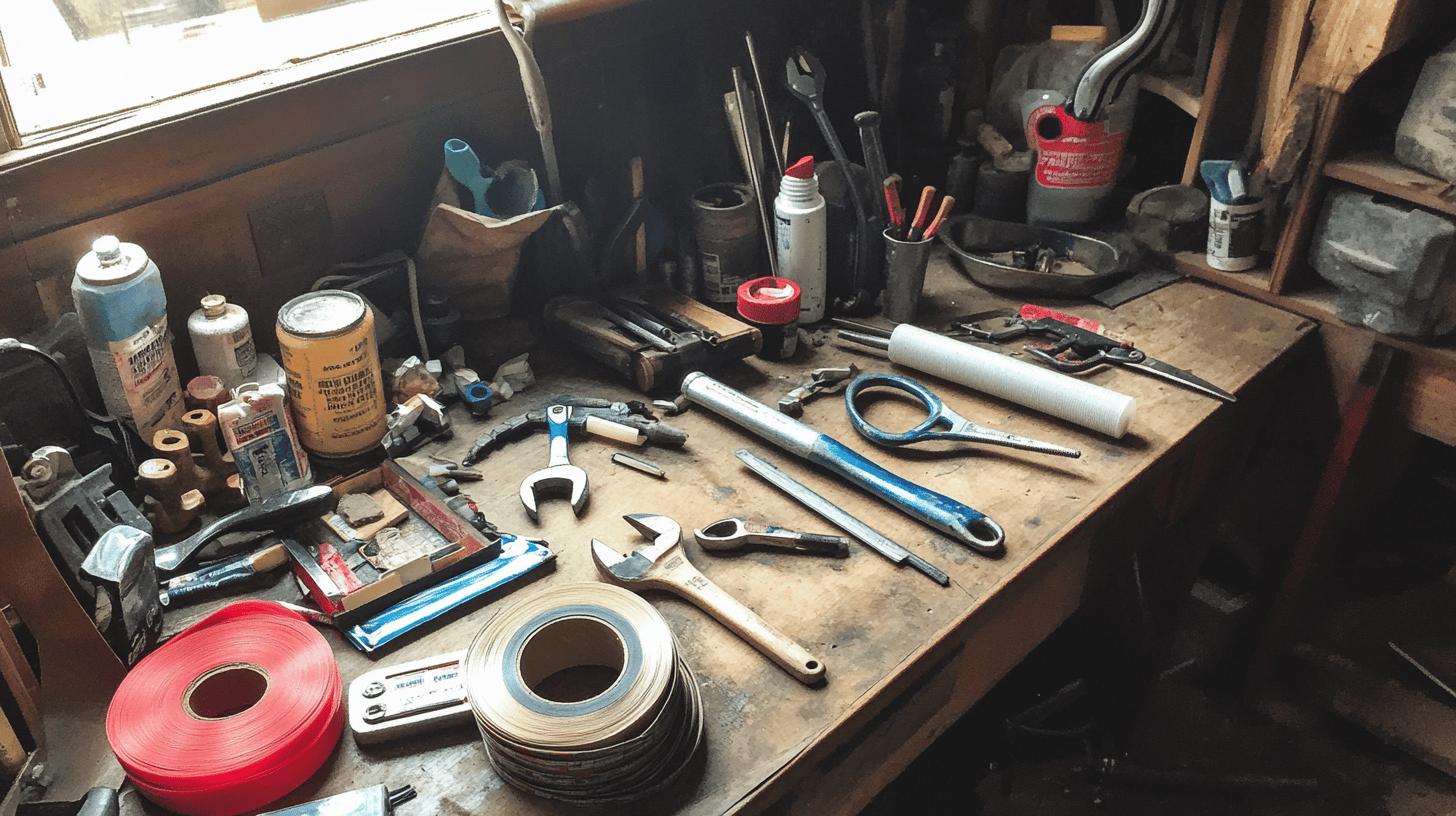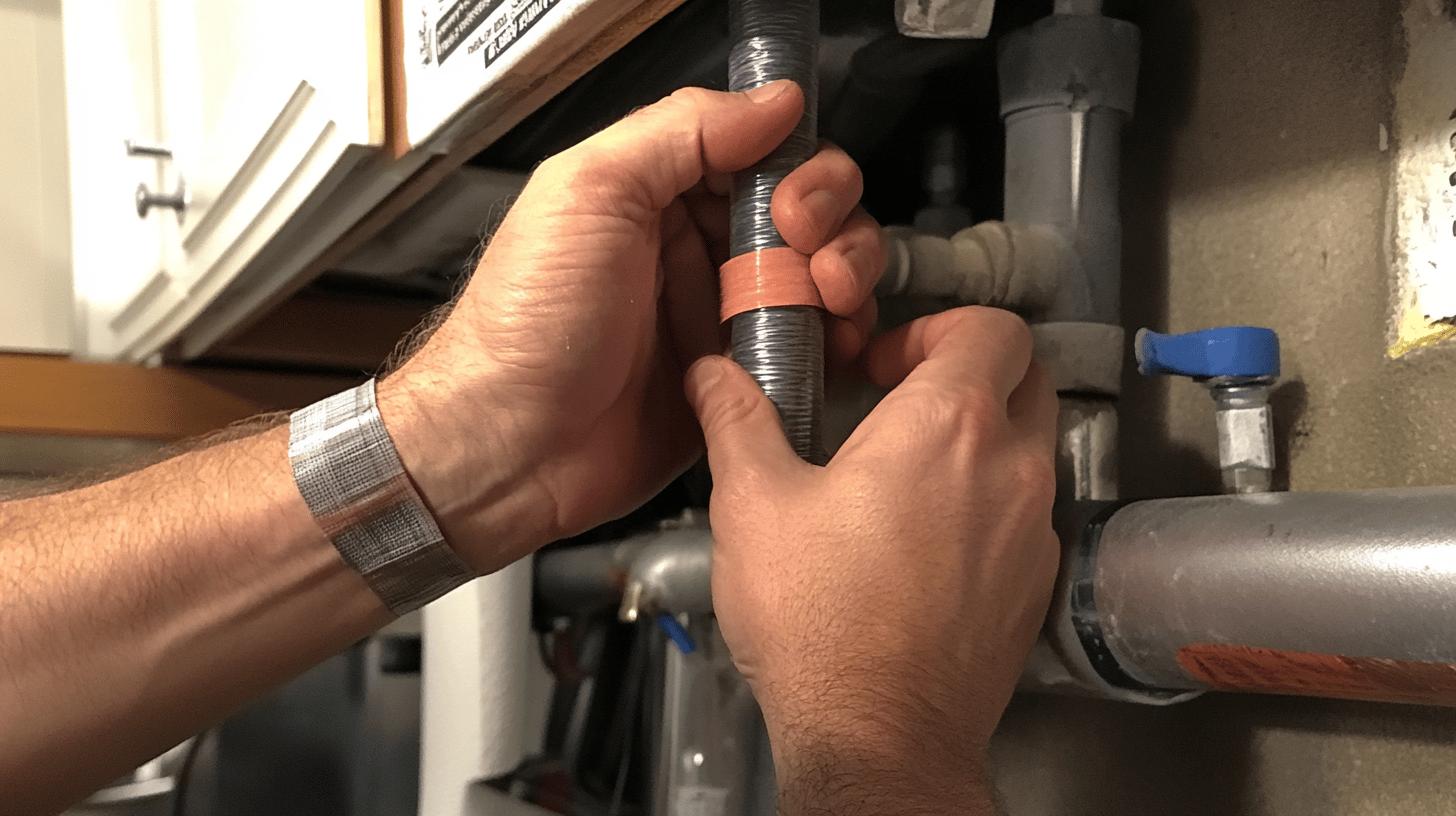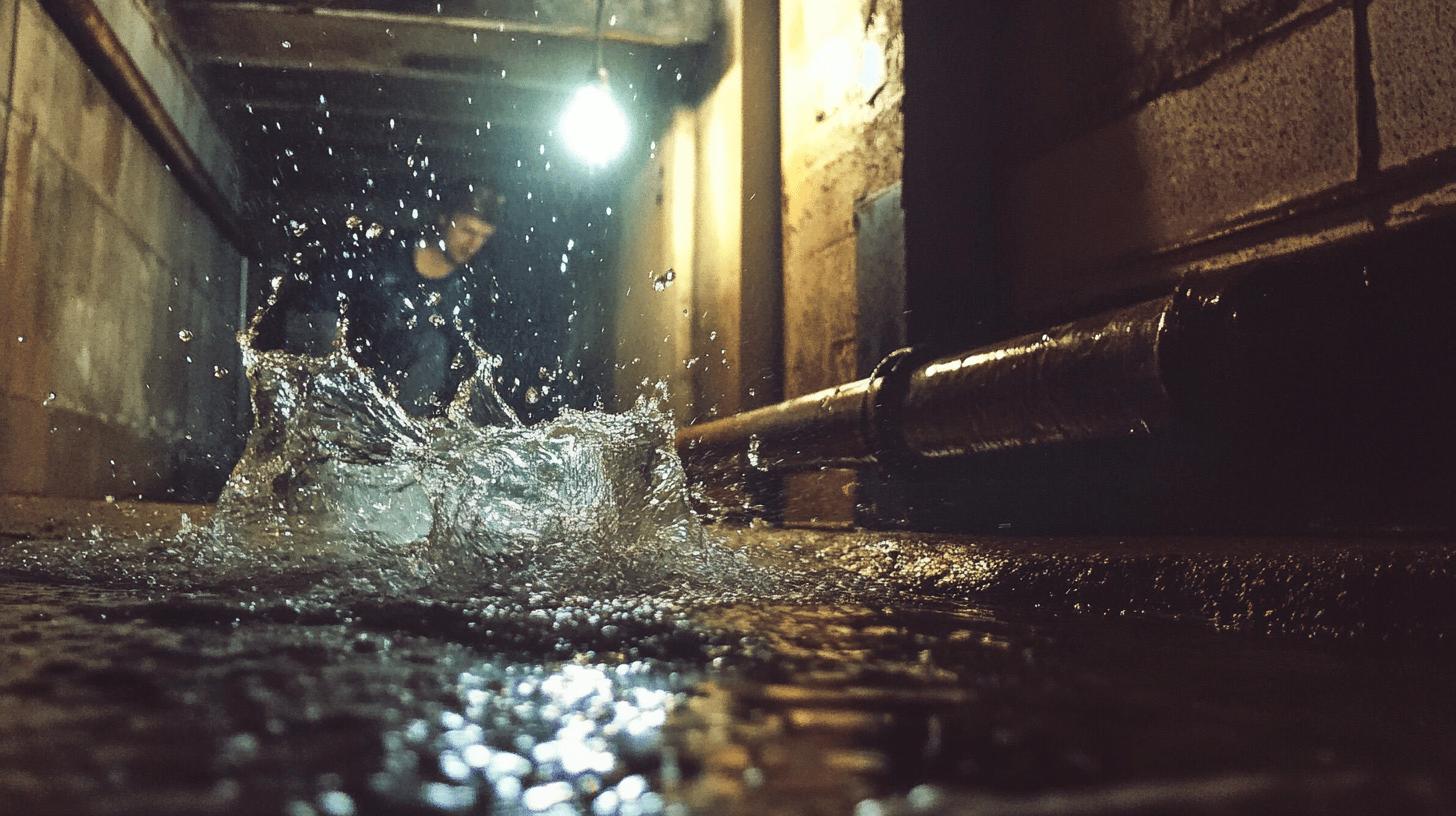TL;DR:
-
Immediate actions for a burst pipe:
- Turn off main water supply.
- Document damage (photos/videos).
- Drain excess water (open faucets).
- Remove valuables from the area.
- Use temporary fixes like duct tape or pipe clamps.
-
Tools for temporary repairs:
- Adjustable wrench, plunger, drain snake, duct tape, plumber’s putty, epoxy.
-
Temporary sealing methods:
-
Duct tape: Quick and easy.
-
Plumbing epoxy: Stronger seal, molds well.
-
Pipe clamps: Durable, handles higher pressures.
-
Advanced techniques:
- Pipe wraps and rubber couplings for more durable, temporary fixes.
-
Safety precautions:
- Wear gloves/goggles, turn off electricity, ventilate, use proper tools, keep kids/pets away.
Did you know that a burst pipe can flood your home with gallons of water in just minutes? When this happens, it’s crucial to know how to quickly fix it temporarily to minimize damage. In this guide, you’ll learn what immediate steps to take, the essential tools you should have ready, and temporary sealing methods to help you buy time until a plumber arrives. Let’s get started and make sure you’re prepared for this plumbing emergency!
Immediate Actions for a Burst Pipe
Acting quickly when a pipe bursts is essential to minimize water damage and avoid costly repairs. If you notice a leak, the first thing you should do is turn off the main water supply immediately. This will stop the water flow and help prevent further damage. Quick action can save your property from serious issues. While temporary fixes can provide some relief, they can’t replace the need for a professional repair.
Follow these immediate steps to manage the situation:
- Turn off the main water supply: Locate and shut off the main valve to stop water flow.
- Document the damage: Take pictures and videos of affected areas for insurance purposes.
- Drain excess water: Open nearby faucets to release remaining water in the pipes.
- Remove valuables: Move furniture and important items away from the leak to prevent damage.
- Use temporary fixes: Use duct tape or pipe clamps as quick solutions to minimize leakage.
After taking these initial steps, it’s important to call a professional plumber. Temporary fixes are just that—temporary—and they may not hold up for long. A licensed plumber can provide a permanent solution, ensuring your plumbing system is safe and sound. Be sure to document any damage, as this will help with insurance claims and assist the plumber in assessing the situation. Hiring a professional will give you a long-term solution and peace of mind.
Tools and Materials for Temporary Pipe Repair

Having the right tools on hand is essential for effectively dealing with a burst pipe. An adjustable wrench is a must-have; it makes it easy to tighten or loosen connections during DIY repairs. Additionally, materials like duct tape or epoxy can be really handy—they can help prevent minor leaks from turning into major issues. These tools are simple to use and can provide a quick fix until a professional can take over.
Here’s a handy list of tools and materials:
- Adjustable Wrench: Tightens or loosens pipe connections.
- Plunger: Clears minor clogs and water blockages.
- Drain Snake: Removes stubborn clogs from pipes.
- Duct Tape: Offers a quick, temporary solution around leaks.
- Plumber’s Putty: Temporarily seals minor leaks and fills gaps.
- Epoxy: Moldable for sealing cracks and plugging leaks.
You can easily find these items at hardware stores or online. Having them ready means you can quickly respond to minor leaks, helping to reduce damage. While these fixes are only temporary, they are essential for buying time until a professional arrives to handle the situation.
Temporary Sealing Methods for Burst Pipes
When a pipe bursts, using temporary sealing methods can give you immediate relief. While these solutions aren’t permanent, they effectively control water leaks and help prevent further damage.
Duct tape is a simple method for sealing leaks is using duct tape. Start by drying the leak area, then wrap the tape tightly around the pipe. It’s a quick solution when time is critical, and duct tape is commonly available in most homes. Keep in mind, this is only a short-term fix.
Plumbing epoxy offers flexibility for sealing pipes. This moldable material fills cracks and stops leaks effectively. To use, knead the epoxy until it softens, then press it firmly over the leak. It adapts to irregular shapes, providing a stronger and more durable seal than duct tape.
Pipe clamps offer extra durability for sealing leaks. Start by placing a rubber patch over the leak, then secure it with a clamp for a tighter hold. Clamps can be combined with duct tape or epoxy for added stability, especially in handling higher-pressure leaks.
Benefits at a glance:
-
Duct Tape:
- Quick and easy
- Affordable and available
-
Plumbing Epoxy:
- Fits irregular surfaces
- Stronger seal
-
Pipe Clamp:
- More durable
-
Handles higher pressures
These methods are great for emergencies, but they aren’t permanent fixes. A professional plumber can address the root cause and provide lasting repairs. Temporary fixes simply buy you time and help prevent further damage until professional help arrives.
Advanced Techniques for Temporary Pipe Fixes

Advanced repair techniques offer more durable solutions while waiting for professional service. These methods control leaks effectively, preventing further damage. Pipe wraps harden around a pipe, forming a strong seal. They adhere closely, suitable for various materials and sizes, offering a reliable temporary fix.
Rubber couplings are flexible connectors that secure pipe joints, very effective at joints or mid-pipe. They adjust to slight pipe movements, maintaining a seal under pressure.
Advantages:
- Durable temporary fix
- Fit different materials and conditions
- Useful for joint and mid-pipe leaks
Using these techniques helps reduce the risk of damage by keeping your plumbing stable until a professional arrives. They prevent minor leaks from turning into major problems.
Safety Precautions in Temporary Pipe Repairs
Safety is key when fixing pipes. Always wear gloves and goggles to protect yourself from sharp objects and chemicals. Turn off nearby electricity to prevent accidents, and make sure the area is well-ventilated to disperse any fumes.
- Protective Gear: Use gloves and goggles.
- Turn Off Electricity: Prevents hazards near the leak.
- Ventilation: Use open windows or fans.
- Proper Tools: Minimize injury and ensure effective repairs.
- Keep Kids and Pets Away: Ensure their safety during repairs.
For major leaks, call a professional as soon as possible. Temporary fixes are only short-term solutions and can’t replace expert repairs. Professionals ensure the job meets safety standards and provides lasting protection for your home against future damage.
Final Words
Taking quick action during a burst pipe emergency can greatly reduce home damage. Start by shutting off the water supply and calling an emergency plumber. Temporary fixes like duct tape or pipe clamps provide short-term relief, while more advanced methods like pipe wraps or rubber couplings buy you extra time. Safety is crucial, and professional repairs offer a lasting solution. Knowing these steps prepares you to handle plumbing emergencies with confidence.
FAQ
How do you temporarily seal a burst pipe?
A temporary seal can be created by wrapping duct tape tightly around the burst section of the pipe. This solution helps minimize water flow until professional repairs can be done.
How do you temporarily fix a split pipe?
To fix a split pipe temporarily, use plumbing epoxy. Knead the epoxy to soften it, apply over the split, and allow it to harden. This creates a temporary seal, but professional repair is needed for durability.
How do you fix a burst pipe at home?
Fixing a burst pipe at home requires turning off the main water supply immediately. Use duct tape or a pipe repair clamp to control the leak temporarily. Contact a plumber for a permanent fix.
How do I temporarily plug a water pipe?
A water pipe can be temporarily plugged with plumber’s putty. Mold the putty to fit the hole or crack, applying pressure to make sure it adheres well. This solution is temporary.
How to stop a leaking pipe with water in it?
Stopping a leaking pipe with water in it involves using a pipe repair clamp. Position the clamp over the leak and tighten it to reduce water flow. This should be followed up with a permanent solution by a plumber.
How to fix a leaking pipe joint?
To fix a leaking pipe joint, first, turn off the water supply. Use rubber couplings to tighten the joint and seal the leak temporarily. Have a professional assess it for a long-lasting repair.
Can you fix a leaking pipe without turning the water off?
Fixing a leaking pipe without turning the water off is challenging, but try using a pipe clamp for a quick solution. For best results, turn off the water and seek professional repair soon.
What is a pipe repair clamp?
A pipe repair clamp is a tool that surrounds a leaky pipe section, reducing or stopping the leak by tightening around it. This is a good temporary solution before professional repair.

